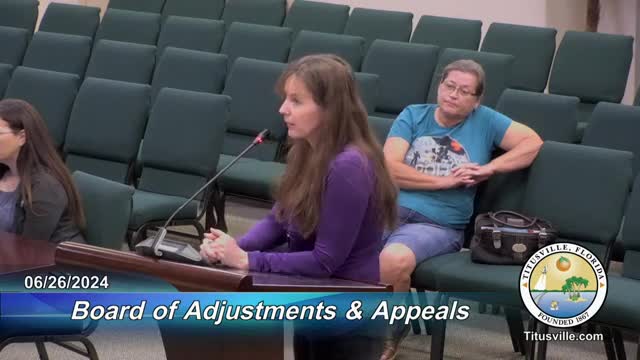Tensions rise over airport zone development restrictions
June 27, 2024 | Titusville, Brevard County, Florida

This article was created by AI summarizing key points discussed. AI makes mistakes, so for full details and context, please refer to the video of the full meeting. Please report any errors so we can fix them. Report an error »

In a recent government meeting, discussions centered around a proposed development project within an airport height obstruction zone, raising concerns about compliance with local regulations and environmental impact. John Morris, representing the applicant, emphasized that the project would adhere to strict height limitations, with all buildings capped at 25 feet and landscaping restricted to trees under 20 feet due to the site's proximity to the airport.
Morris highlighted the intention to enhance the area with additional trees and a park, while also addressing existing site conditions that require cleanup and regrading to ensure proper drainage. However, a disconnect emerged between the applicant's claims and the staff's recommendations, which indicated that the project could meet all code requirements with low-impact management strategies.
The board expressed concern over the conflicting information, suggesting a potential miscommunication that could affect the decision-making process. Staff clarified that a 20-foot public utility drainage easement on the property could serve as a landscape buffer, providing necessary separation and screening for the development.
Given the complexities and the need for further discussion, board members leaned towards tabling the decision to allow for additional site evaluation and clarification of the landscaping requirements. The meeting concluded with a consensus to postpone the decision, ensuring that all parties could address the outstanding issues before moving forward.
Morris highlighted the intention to enhance the area with additional trees and a park, while also addressing existing site conditions that require cleanup and regrading to ensure proper drainage. However, a disconnect emerged between the applicant's claims and the staff's recommendations, which indicated that the project could meet all code requirements with low-impact management strategies.
The board expressed concern over the conflicting information, suggesting a potential miscommunication that could affect the decision-making process. Staff clarified that a 20-foot public utility drainage easement on the property could serve as a landscape buffer, providing necessary separation and screening for the development.
Given the complexities and the need for further discussion, board members leaned towards tabling the decision to allow for additional site evaluation and clarification of the landscaping requirements. The meeting concluded with a consensus to postpone the decision, ensuring that all parties could address the outstanding issues before moving forward.
View full meeting
This article is based on a recent meeting—watch the full video and explore the complete transcript for deeper insights into the discussion.
View full meeting